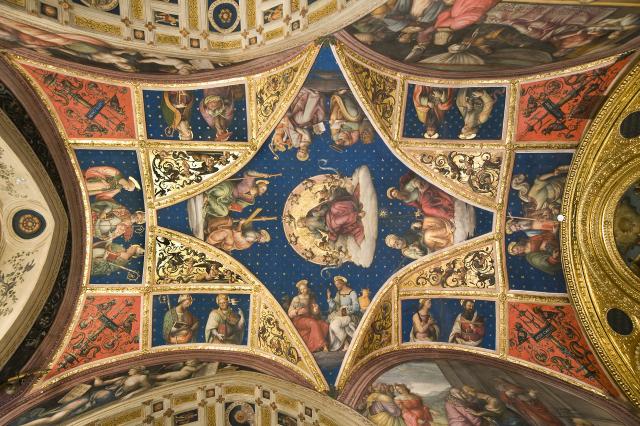The Chapel of San Giovanni Battista
Historic seat of the Guild of Merchants and Money Changers

A small doorway under the lunette with I Profeti e le Sibille provides access to the Chapel of San Giovanni Battista a space which retains the name of the pre-existing (and now demolished) San Giovanni Church.
The chapel is completely decorated with frescoes (except where there are benches and backrests) giving it a sumptuous feel. It was decorated between 1509 and 1529 by the painter Giannicola di Paolo, one of Perugino’s best apprentices. The artist’s work visible on the vault is closely modelled on Vannucci’s style but the walls, which were painted at a later date, show a movement towards a figurative mode which is more closely related to the style of artists from Siena such as Peruzzi, Sodoma and Pacchia.
The most interesting of the episodes devoted to San Giovanni Battista is the one which struck Nathaniel Hawthorne by is originality and inventiveness. The American novelist came across the painting while visiting Perugia in 1858. He was particularly taken with the depiction of la Decollazione (the beheading) and in 1879 wrote “this holy personage was represented as still on his knees, with his hands clasped in prayer, although the executioner was already depositing the head in a charger, and the blood was spouting from the headless trunk, directly, as it were, into the face of the spectator.”